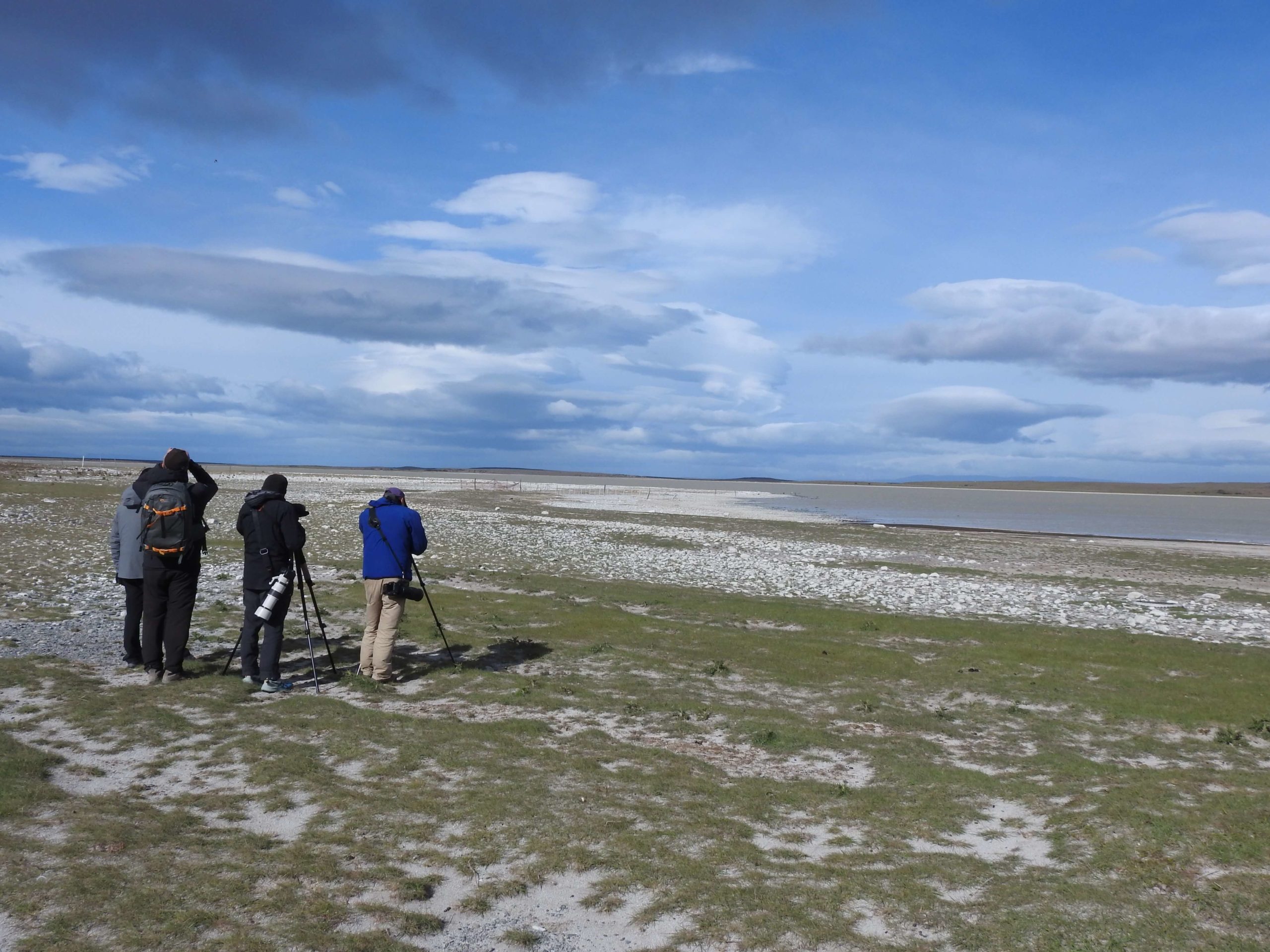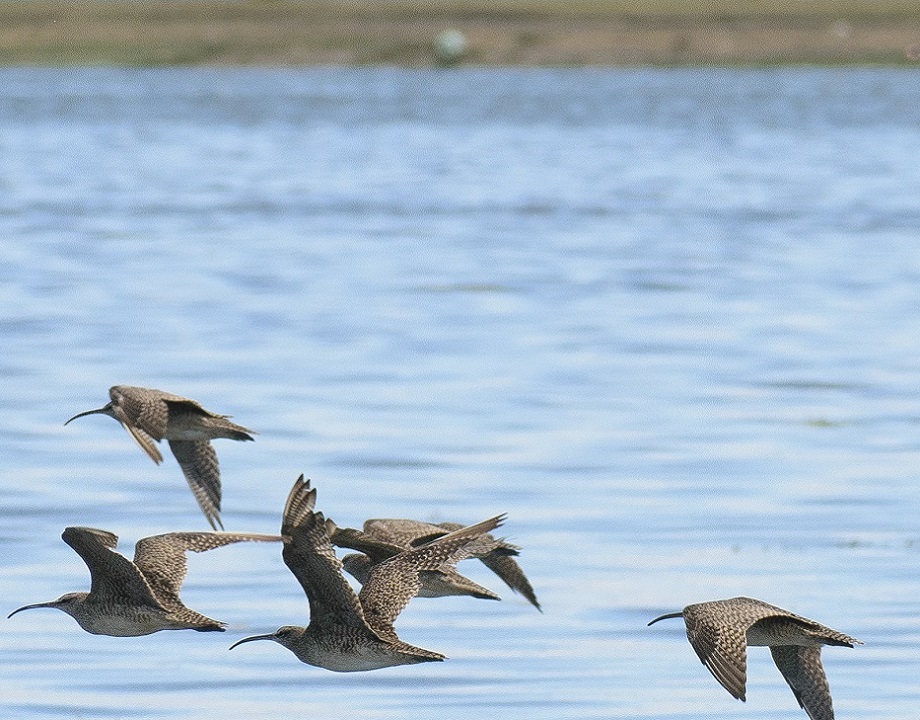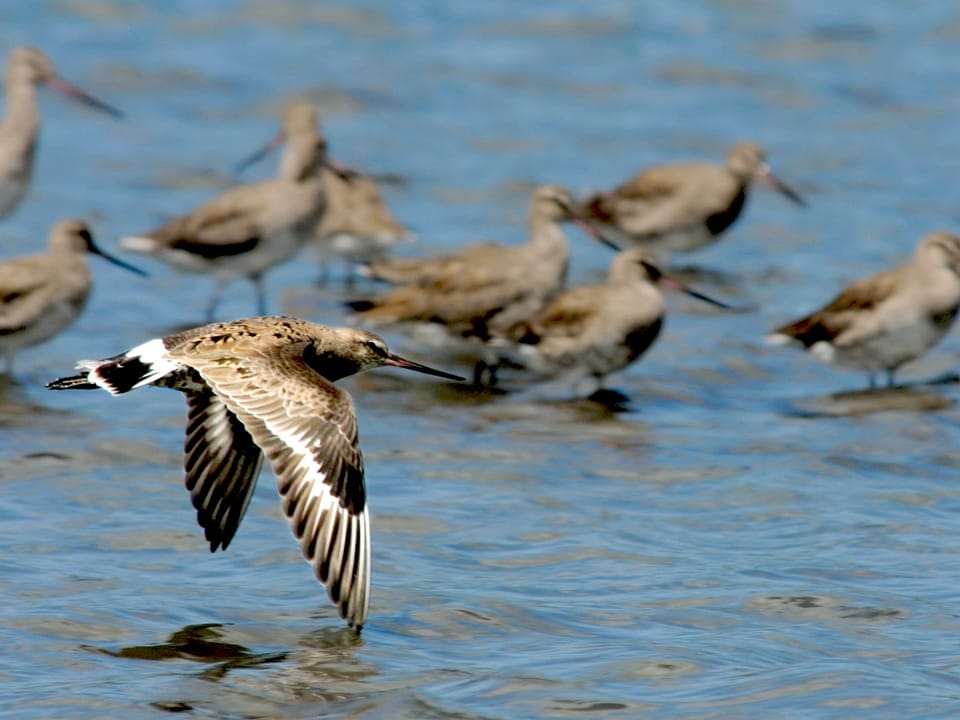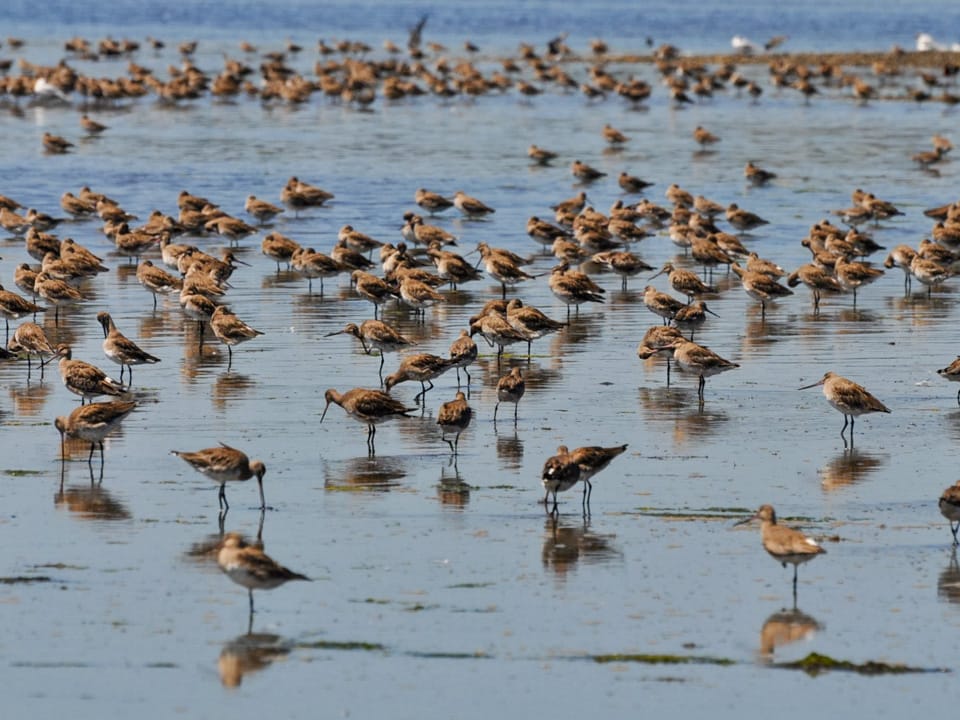Together with partners in Argentina and Chile, Manomet researchers are unraveling the mysteries of one of the rarest shorebirds in the world.
At first glance, the vast landscape of the Patagonian steppe might seem empty, except for the occasional herd of grazing sheep. But the windswept grasslands in southern Argentina and Chile are home to many species, including the Magellanic Plover, one of the rarest shorebirds in the world.
The Magellanic Plover is a small, plump bird with gray plumage, pink legs, and bright red eyes. In the Southern Hemisphere’s summer, from September to January, it nests in isolated pairs along the shores of shallow lakes and lagoons that dot the steppelands.
In December of 2021, Manomet supported the first binational survey of Magellanic Plovers to try to get an accurate population estimate for these birds. Led by Asociación Ambiente Sur and the Centro de Rehabilitación de Aves Leñadura (CRAL), conservation organizations in Argentina and Chile respectively, fieldworkers spent ten days surveying 180 sites, looking for pairs of birds in their nesting habitat. Previous estimates had placed the Magellanic Plover population at somewhere between 1,500 and 7,000 birds, but the survey found just 264.
The following May, the researchers continued their search. The birds leave the steppes in winter and migrate to the coast, gathering in small groups along the Atlantic shore of Argentina and Southern Chile. Fieldworkers visited 65 coastal sites and counted 300 Magellanic Plovers.
“That was pretty concerning,” says Ricardo Matus, director of CRAL. “We found about the same number in summer and winter, when the birds are in different situations. That tells us that the number has been overestimated. Even if we were missing half of them, 600 birds is still very low.”
Magellanic Plovers are currently listed as near-threatened, but these new population numbers could mean that the birds should be reclassified as threatened or endangered. This would underline the importance of protecting their habitat, rally support for conservation efforts, and gather funding to better understand them.
“There is still a lot that we don’t know,” says Arne Lesterhuis, a shorebird monitoring and conservation specialist at Manomet. “Why are they so rare? What’s the mortality rate? What’s the success rate of brooding? Our partners at Ambiente Sur and CRAL have worked with these birds for quite a while and have learned a lot, but they still have some of these same questions.”
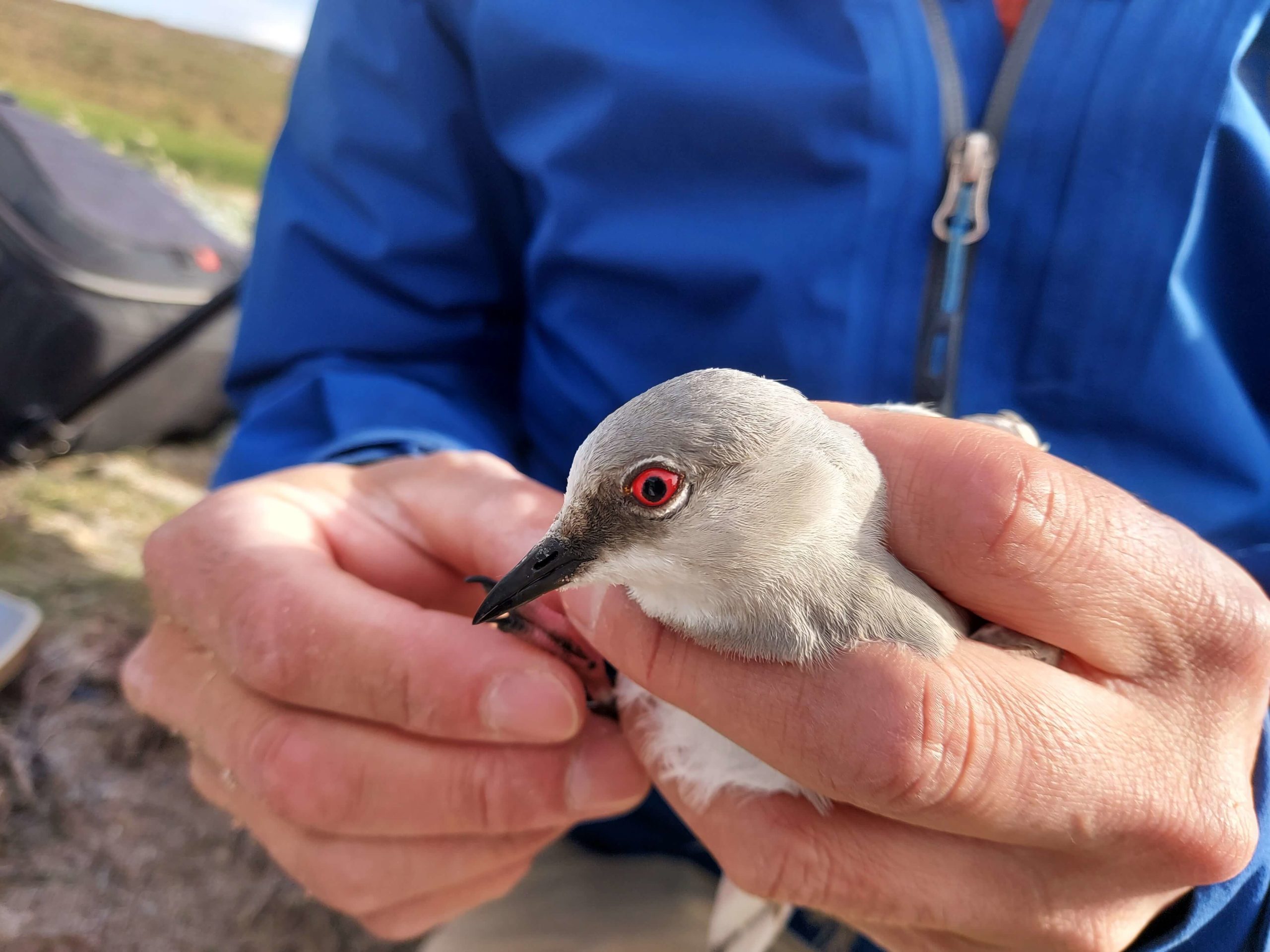
An unusual bird in a difficult spot
An adult Magellanic Plover is about the size of an American Robin, with a stout body and short, black beak. Despite its name, it is not actually a plover—recent analysis suggests that it is most closely related to sheathbills, a family of Antarctic shorebirds. It is unique among shorebirds for feeding its young like a dove, regurgitating food from a thin-walled pouch in the esophagus called a crop. It’s enough of an oddball to get its own taxonomic family: Pluvianellidae.
The biggest threat to these unusual little birds is habitat loss. They nest around shallow, brackish lagoons, eating invertebrates along the shore. But due to climate change and other factors, many of these lagoons are drying up, causing birds to abandon the area. Researchers don’t know if displaced birds try to find a new territory or give up on reproducing for the season.
“We are going through a historic drought,” says Germán Montero, the executive director of Asociación Ambiente Sur. “In recent years, there has been no water. When we did the census, which was huge, we found some wetlands, but many places were completely dry.”
The nesting areas are mostly on private land owned by sheep ranchers, which brings another set of problems. The nests are well-camouflaged in the pebbles along the lagoons and can be easily trampled by livestock and people.
The birds are somewhat more protected at some of their wintering sites, such as the Río Gallegos Estuary in the Santa Cruz province of Argentina, where Asociación Ambiente Sur is a key stakeholder in regards of the conservation actions at the site. The area is a site of international importance in the Western Hemisphere Shorebird Reserve Network, providing habitat for Magellanic Plovers and many other migrating shorebirds. But even here, the birds face threats from off-road vehicles, dogs, and horses, while other coastal sites are also threatened by development and pollution.
The good news is that efforts to preserve the Magellanic Plover’s habitat could benefit many species, Lesterhuis says. “Especially during the nonbreeding season, they use areas that are also important for North American species like the Red Knot. If we protect these sites, we protect key sites for many species that have larger populations.”
Tracking migration routes
This past December, Manomet researchers joined their partners at CRAL and Asociación Ambiente Sur in an effort to put satellite tags on several nesting pairs of Magellanic Plovers. The researchers are hoping data from the tags will help them learn more about the areas that are important to the birds during their migration.
“We know that they breed in the interior of Patagonia at these lakes, very spread out, and then they leave those in the winter and go to the Atlantic coast,” Lesterhuis says. “But how they get there, how long it takes them, whether they stop somewhere halfway—there is no information on that.”
The team headed out to the steppe and set up traps to gently catch birds at their nests, tagged them swiftly, and released them. Lesterhuis commented that one of the Magellanic Plovers they caught was unusually young to be part of a nesting pair. It still had some juvenile feathers in its wings, meaning that it had hatched the previous year.
“Normally, shorebirds don’t breed until their third or fourth year because they lack the experience to fight over territories or mates,” Lesterhuis says. “It could mean that the population density is very low, so juveniles already have an opportunity to breed—we don’t know. But it’s very interesting.”
It’s another question that the scientists hope to be able to answer with more research. Overall, they were able to tag a handful of Magellanic Plovers. The tags will record the birds’ locations and hopefully, when they migrate to the coast, reveal their routes and any vital habitat along the way. It’s information that is urgently needed as renewable energy companies set their sights on Patagonia.
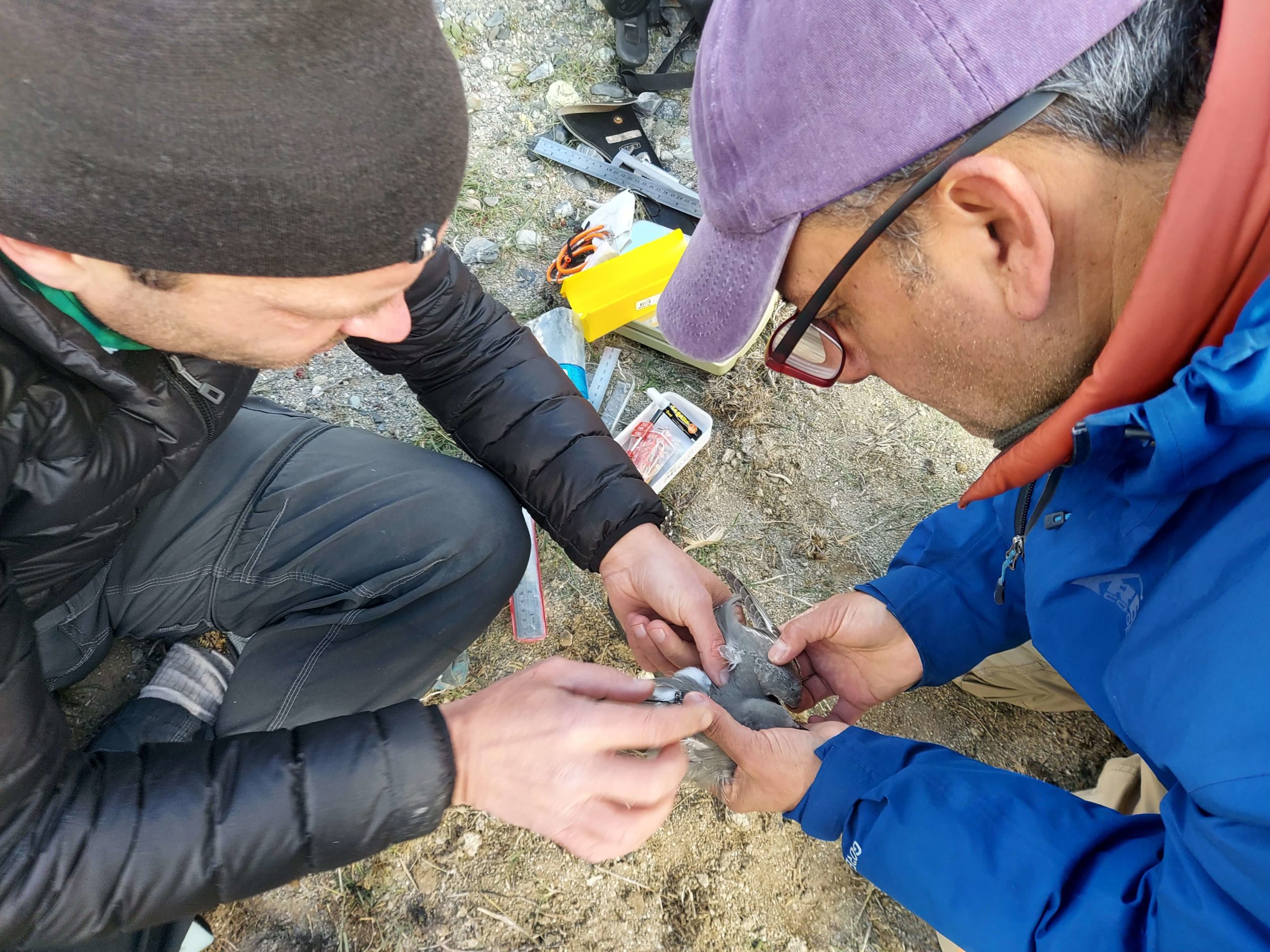
An uncertain future
With consistent, strong winds and significant amounts of open, privately owned land, Patagonia has drawn the interest of companies looking to generate renewable energy using e-fuels and ammonia, particularly green hydrogen. Hydrogen fuel does not produce carbon when burned, but it takes a lot of energy to create and the powerful Patagonian winds could provide that energy. Multiple companies are investing in the construction of large-scale wind farms, hydrogen generation plants, and shipping technologies to produce green hydrogen at the southern tip of South America and transport it to Europe.
“In Magallanes we have all the necessary conditions for this: we have the wind, we have the space and the land is private property. But it seems to me that everybody forgot about the birds in the analysis,” Matus says. “This will make big changes to the landscape that could affect the migratory routes of many species, which we do not know today.”
The impacts of these projects could be devastating for the Magellanic Plover, which already has such a small population. It’s one of the reasons that the researchers are working as quickly as possible to understand the habitats and flight paths that this species relies on. That knowledge could help guide where these installations should be built.
“Having this information is vital for the future of the species, which is a symbol of the steppe,” Montero says. “Many people believe there is nothing there, but the steppe is full of life. For us, working with this species is an opportunity to bring visibility to these environments that have been neglected. There is still a long way to go, but we have made important progress.”





 Back to all
Back to all